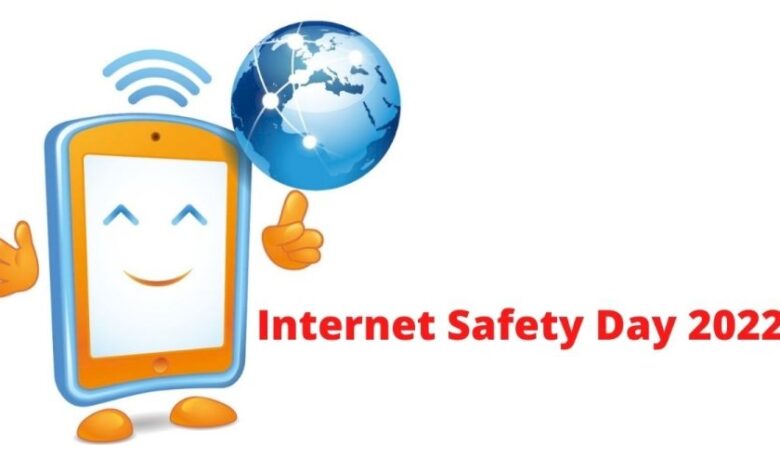
Our internet presence is growing daily, with more than half of the world having access to the Internet. While this has made our lives easier, it has also caused an uptake in the number of cyber dangers we face. Luckily, there are cybersecurity solutions such as browser fingerprints or multi-factor verification that can help ensure safety on the Internet.
Photo: Pixabay
Internet in 2022
In 2022, it is no longer possible to even imagine the world without the Internet. It made it possible for us to experience an entirely new digital world. We can now use it to communicate with anyone in the world in seconds, work remotely, and access information quickly. It doesn’t stop there, you can use it to visit any other city in the world and walk its streets and the Internet’s impact on education is irrefutable. Now you can use the Internet to learn a new language or take various courses and even go to college online. It gave us a world of unlimitless options, and it is no wonder more and more people are accessing it daily. By April of 2022, five billion users worldwide had access to the Internet, 63% of the global population, with Northern Europe taking the lead with a 98% internet penetration rate. With so many people accessing the Internet daily, it is no wonder cybercriminals and fraudsters have doubled their efforts to find ways to exploit all of them.
Dangers we face
While we use the Internet to make our lives better and easier, some use it for different purposes. Cybercriminals and fraudsters are using the rise in our online presence to reach more people, making the Internet a dangerous place. Danger looms from everywhere as cybercriminals constantly find new ways to commit their malicious actions, showing no sign of stopping. New cyberattacks are rising rapidly, there was a cyberattack happening every 39 seconds in 2021, and the gap between them is going to get smaller and smaller in time. From trying to steal your confidential data, access your devices or even your accounts, cybercriminals will never stop trying to get the best of you. If you want to ensure your online safety, you will need to learn how to recognize these risks and avoid them.
Most common types of danger on the Internet:
- Phishing
- Social engineering
- Malware
- Ransomware
- Computer Viruses
- Account takeover
- Data Breach
The Internet can be dangerous, but we can’t spend our days living in fear when we should be enjoying it instead. Regardless if it is an individual, business, or even government, everyone deserves to feel safe on the Internet, and each of us is responsible for ensuring this happens. Luckily, everyone can take steps to ensure their safety on the Internet.
What can you do to stay safe online?
The Internet has infiltrated every aspect of our lives. It allowed us to enjoy various benefits, from new apps being developed, streaming services to online shopping or remote working. If we want to keep enjoying it, we need to start taking the necessary steps to protect ourselves from this danger and protect the safety of the Internet.
1. Get the latest antivirus and firewall software.
Antivirus and firewall software are essential elements of any cybersecurity strategy. While they are not able to prevent all of the online threats, they can effectively detect and remove the dangers of malware, viruses, or trojans. Keep them up to date to protect you against any new online threats.
2. Practice good password hygiene.
Simple, easy-to-guess passwords pose one of the greatest dangers to your online security. With so many websites and apps demanding that you create an account, coming up with new complex passwords can get difficult after some time. This is why many people still rely on simple passwords that are easy to remember, but also easy to guess. If you want to protect your accounts from cybercriminals and fraudsters, you need to improve your password hygiene. Make sure you use unique, complex passwords to make it harder for cybercriminals to breach and protect your other accounts if the worst happens.
3. Keep your personal information personal.
We all consider the Internet our second home, especially our social media channels, which can also put us in significant danger. Many people are not as careful with their personal information as they should be, sharing it on their social media channels for anyone to find. When deciding to share something online or not, you need to consider first whether you would share it with strangers in real life. If your answer is no, you should stop before you can do something you can’t take back. Cybercriminals can collect the data you share and use it for malicious actions.
4. Ensure your privacy settings are on.
Most of the accounts have an option of adapting privacy settings to ensure you protect your online privacy. By ensuring privacy settings are on, you can make sure nobody can access your data.
5. Be mindful of your environment.
The online environment is no different from the ones in the real world; there will always be some danger. Learn to avoid it online, just like you would in your private life. If you see a suspicious site or something doesn’t seem right, just turn it off and don’t put yourself at any unnecessary risk.
6. Always use a secure Internet connection.
Having the Internet available just about anywhere can lull us into a false sense of security. Not all internet connections are safe, and they can put you in real danger. Public Wi-Fi connections, for example, are a hotspot of criminal activity with fraudsters trying to use it to access your devices and steal your confidential information. Be careful when using unknown or public connections, and protect your data.
7. Download files only from a trusted source.
Cybercriminals will try to infect various software with viruses, malware, or trojans and pass on the infected software to as many people as possible. By being mindful of which sites you are visiting and the files you are downloading, you can avoid becoming a victim.
Conclusion
Internet dangers are a real and unavoidable part of our new digital lives. We have a choice of being too afraid to use the Internet because we might become a victim, or we can choose and fight against it. Follow the steps stated above and learn how to avoid those risks, and just enjoy the Internet and all the benefits it brings.




